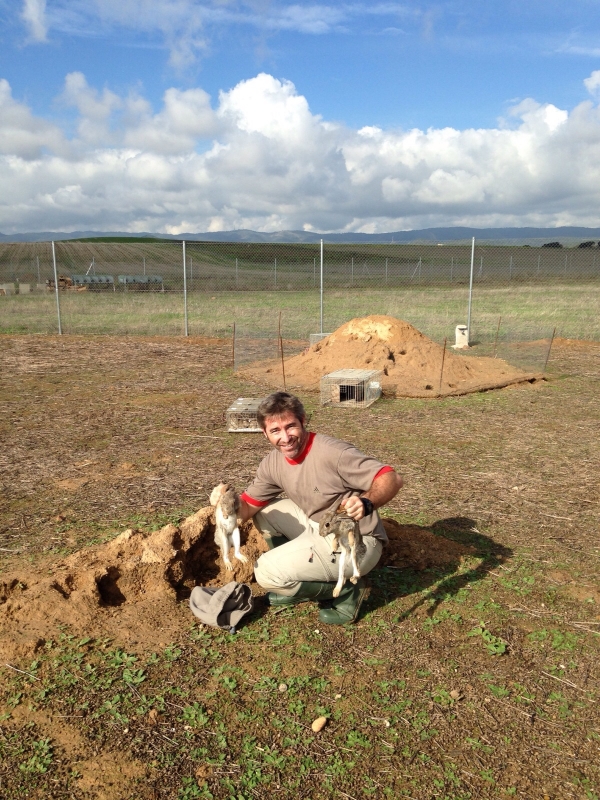The motorways that cross Andalusia were built to connect places, people and favor freight transport. However, despite having been designed for these purposes, there are other travelers that share these stretches with cars and trucks by means of the main arterial roads in the region, such as A-92, A-4 and A-45.
These other travelers are wild rabbits (Oryctolagus cuniculus) that use these infrastructures as dispersal corridors, becoming pests and increasing the concern within the agricultural sector about the damage they cause.
In search of their perfect habitat, with thousands of kilometers that allow for getting around within the Andalusian region, rabbits do not choose just any old place, but rather they have several favorite destinations. A-92 towards Sevilla – Málaga and A-44 towards Jaén – Granada are the most popular areas for these pests when it comes to settling down in their rabbit holes, but what do these places have in common?
With the aim of determining what constraints favor a rabbit choosing one habitat over another and, in such a way, be able to take measures to prevent infestations or at least reduce them, University of Cordoba Departament of Botany, Ecology and Physiology researcher Carlos Rouco worked with researchers Miguel Ángel Farfán and Jesús Oliveros from the University of Malaga, Luis Arias at UCO, Rafael Villafuente and Miguel Delibes Mateos from the Institute of Advanced Social Studies (abbreviated to IESA – CSIC in Spanish) on the design of a favorability model for the presence of rabbit holes in the vicinity of these transport infrastructures. An answer was obtained with this tool: the most favorable points for the presence of rabbit holes on slopes were those where olive groves were present.
By means of a register of rabbit holes along 1500 kilometers of Andalusian motorways using the CyberTracker 3.0 application, able to register the exact point where rabbit holes can be spotted, the research team was able to draw a map showing the presence of rabbit holes.
By analyzing the characteristics of the square kilometers surrounding the area where a rabbit hole is found and comparing different habitats, a series of descriptors can be procured regarding the area where rabbit holes are present. 55 indicators were established that describe the zone which were included in the favorablity model. By doing so, the model establishes the degree of favorability (on a scale of 0 to 1) of rabbit holes being present in a zone depending upon its characteristics. The presence of an olive grove on a motorway received a favorability score of greater than 0.7.
From the perspective of pest management, this model helps to know the possibility of pests coming to a specific habitat in advance and thus design mitigation measures that help to avoid future harm to agricultural production as well as to the infrastructures themselves.
Identifying the favorability of the presence of pests according to the zone contributes to the prevention of future damage. Bearing in mind that wild rabbits are endangered (new criterion assigned by the International Union for Conservation of Nature for 2019) in some areas, knowing the most favorable areas for high density could help to identify potential donor populations to repopulate the zones from which this species is disappearing.
With this study, society has yet another tool to more effectively manage rabbit populations.
Rouco, C; Farfán M.A; Oliveros, J; Arias De Reyna, L; Villafuerte, R; Delibes-Mateos, M. (2019): Favourability for the presence of wild rabbit warrens in motorway verges: Implications for the spread of a native agricultural pest species. Ecological Indicators, Vol 104, pp 398 – 404. https://doi.org/10.1016/j.ecolind.2019.04.087.


